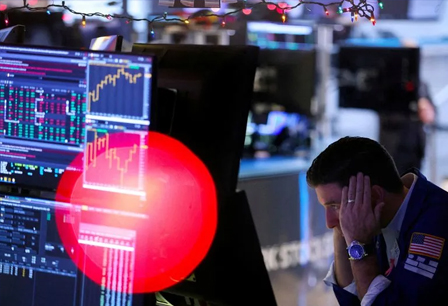The bond market's notorious recession gauge is likely correct, according to Campbell Harvey.
The Duke professor popularized the 3-10 Treasury spread as a recession indicator in 1995.
The gauge has never flashed a false positive - and it's likely saying the Fed made a big mistake, Harvey said.
The inverted yield curve is still correctly signaling a recession even as optimism grows for a soft landing – and the Federal Reserve is making a major mistake in its war against inflation, according to the economist who popularized the bond market's notorious economic indicator.
Campbell Harvey, the Duke University finance professor who coined the inverted yield curve as an indicator of a coming downturn in 1995, doubled down on the accuracy of his famed recession gauge in an interview with CNBC on Thursday. The curve, which measures the difference between the 3-month and 10-year Treasury yields, has correctly predicted every recession since 1968.
Though some market forecasters have warmed up to the idea of a soft landing, the closely watched recession gauge is still likely correct, Harvey said, even though a downturn hasn't yet struck.
That's because the yield curve inversion typically lags behind the start of the recession, with the average wait time over the past four recessions being 13 months from the start of the inversion. The curve officially inverted on October 26 last year, Fed data shows, meaning the recession signal is just a few days shy of the 11-month milestone. If history is any guide, that would put the start date of a potential recession sometime in December or January, Harvey said.
And though the yield curve has flattened its inversion over the past few months, that's typical behavior and such a flattening has preceded the last four recessions, Harvey warned.
"The indicator is eight out of eight when predicting recessions, and it doesn't have any false signals. So it's way too early to say this is a false signal. Maybe it does turn out to be a false signal, but you can't say it's a false signal when you're not even at the average," Harvey said.
It's worth noting that similar recession indicators have been known to flash false positives. The other famous spread, between the 2-year and 10-year Treasury notes, has correctly predicted every recession since 1955, but an inversion in 1960 was not ultimately followed by a downturn.
Still, Harvey believes a recession is imminent due to the Fed's ultra-tight monetary policy, having raised interest rates aggressively over the past year to control inflation. High rates raise the risk pushing the economy into a downturn, especially when considering the lagged effect of rate hikes, meaning financial conditions could still be in the process of tightening as a result of interest rate hikes enacted last year.
Harvey also argued that inflation is a lot lower than the Fed seems to think, and it risks overdoing it by trying to drag it down further. He pointed to shelter prices, the largest component of inflation, which lag behind the official statistics by around 18 months, economists say. Shelter inflation is likely already much lower than the reported statistics, and when accounting for that, inflation is probably hovering closer 1.5%-1.8%, he estimated, not the 3.7% clip reported in August.
"I think that the Fed has made a major mistake. What they should have done yesterday was not only pause, but say 'this is it'," he said of the Fed's September policy meeting, where Powell reiterated that the central bank could take rates higher and keep them elevated for longer. Fed officials should have floated potentially cutting rates this year, not raising them higher, he added.
Interest rates are now at their highest level since 2001. Meanwhile, New York Fed economists have priced in a 61% chance the US will tip into a downturn by August 2024. The 10-year Treasury yield rose 13 basis points on Thursday to 4.478%, the highest level since 2007.












